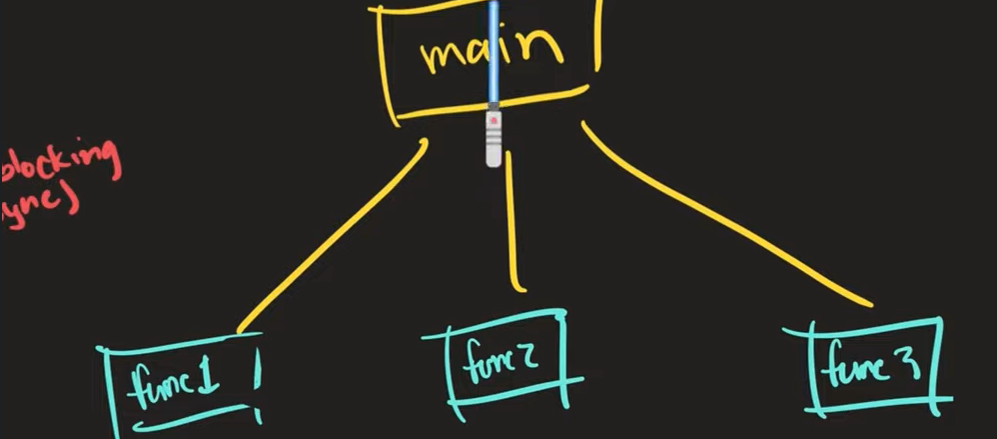Golang中的context包简介

简介
Go语言中的context包定义了一个名为Context的类型,它定义并传递截止日期、取消信号和其他请求范围的值,形成一个链式模型。如果我们查看官方文档,它是这样说的:
context包定义了Context类型,它在API边界和进程之间传递截止日期、取消信号和其他请求范围的值。
包中的主要实体是Context本身,它是一个接口。它只有四个方法:
1 | type Context interface { |
这里,
Deadline:返回应该取消上下文的时间,以及一个布尔值,当没有截止日期时为falseDone:返回一个只接收的空结构体通道,它发出上下文应该被取消的信号Err:在完成通道打开时返回nil;否则它返回上下文取消的原因Value:返回与当前上下文的某个键关联的值,如果没有该键的值,则返回nil
与标准库的其他接口相比,Context有许多方法,这些接口通常只有一两个方法。其中三个密切相关:
Deadline是取消的时间Done信号上下文完成时Err返回取消的原因
最后一个方法,Value,返回与某个键关联的值。包的其余部分是一系列函数,允许你创建不同类型的上下文。
为什么使用Context?
- 它简化了跨进程或API的截止日期和取消的实现。
- 它为你的代码扩展做好准备,例如,使用
Context会使你的代码清晰易操纵,通过将所有进程以子父关系链式连接,你可以将任何进程绑定/连接在一起。 - 它易于使用。
- 它是Goroutine安全的,即你可以在不同的Goroutine上运行相同的上下文而不会泄露。
context.Background()
Background是一个空的上下文,它不会被取消,没有截止日期,也不持有任何值。它主要由主函数用作根上下文或用于测试目的:
1 | package main |
输出:
1 | $ go run main.go |
输出是“context.Background”,它告诉我们这是一个空的Context,它是一个接口,在这个Context接口上,
所有这些数据目前都是nil或空的,因为我们有一个空的Context,即背景上下文,它永远不会被取消,没有截止日期,也没有值。Background通常用于main、init和测试中,以及作为传入请求的顶级上下文。
让我们对所有这些进行fmt.Println检查:
1 | package main |
输出:
1 | $ go run main.go |
上下文取消函数
Go语言的Context包被用来处理我们的进程或API中的请求流,通过将子上下文与父上下文链接起来,我们可以使用context.WithDeadline或context.WithTimeout方法在链中控制截止日期和取消信号。
Context的底层是无法改变的,他在main函数创建,之后传递给其他子函数,比如goroutine,子函数无法改变context,也无法被子进程取消

与done channel不同的是,done是以关闭让其他关闭,而context中的cancel函数则是被调用的
父函数可以取消子函数
如果子函数创建了自己的子函数,也可以把这个context传递下去
那如果子函数想取消自己的子函数呢?
我们可以创建新的context,基于旧的context
我们来举个例子:
1 | func main() { |
在输出过程中,我们会发现apple先停止输出,最后5秒到了,另外两个goroutine也停止运行 。
上下文值传递
在Go语言中,context上下文可以通过WithValue函数来传递值。这个函数接受一个父上下文(parent Context)、一个键(key)和一个值(value),返回一个新的上下文(Context),这个新上下文与父上下文相同,但是增加了一个键值对。这个键值对可以在上下文的整个传递链中被检索。
以下是一个使用WithValue传递值的例子:
1 | package main |
在这个例子中,我们创建了一个带有键"language"和值"Go"的上下文。然后,我们将这个上下文传递给了process函数,在这个函数中,我们检索并打印出了这个值。
需要注意的是,context的值应该是请求范围的数据,而不是全局的。它通常用于传递请求相关的元数据,如请求ID、用户身份信息等。此外,由于context是并发安全的,所以它可以在多个goroutine之间安全地传递和使用。
建议
- 每当你需要使用
context.Context时,确保它总是作为第一个参数。 - 始终使用“ctx”作为变量名,虽然使用其他变量名也可以正常工作,但遵循大多数人的做法是好的,像这样的事情你不需要与众不同。
- 确保调用取消函数。
- 不要在方法中使用结构体来添加上下文,始终将其作为参数添加,即
context.Context。 - 不要过度使用
context.WithValue。
- Title: Golang中的context包简介
- Author: RenXin
- Created at : 2024-04-03 00:00:00
- Updated at : 2024-04-08 21:36:15
- Link: https://blog.renxin.space/Go/go_context/
- License: This work is licensed under CC BY-NC-SA 4.0.